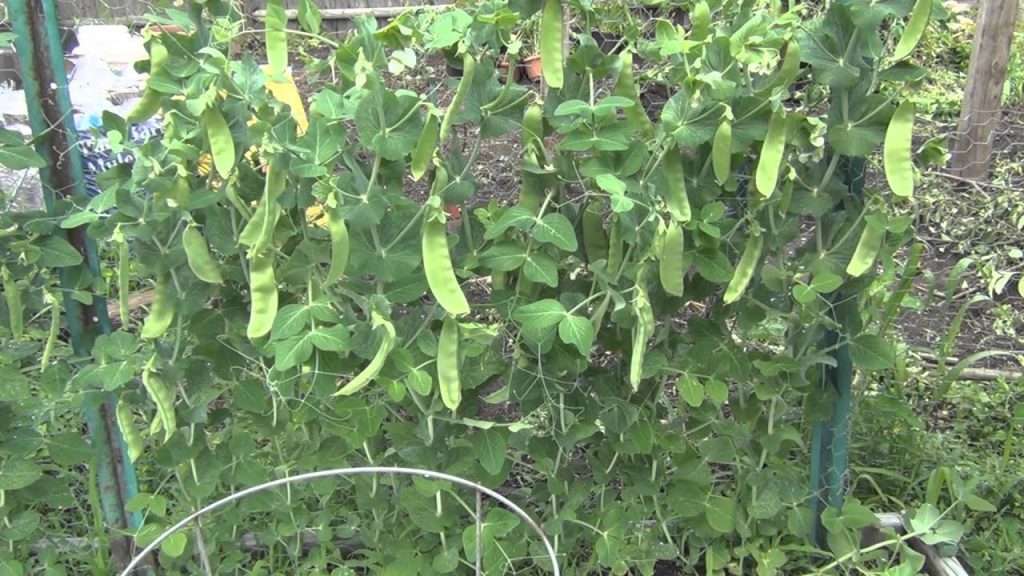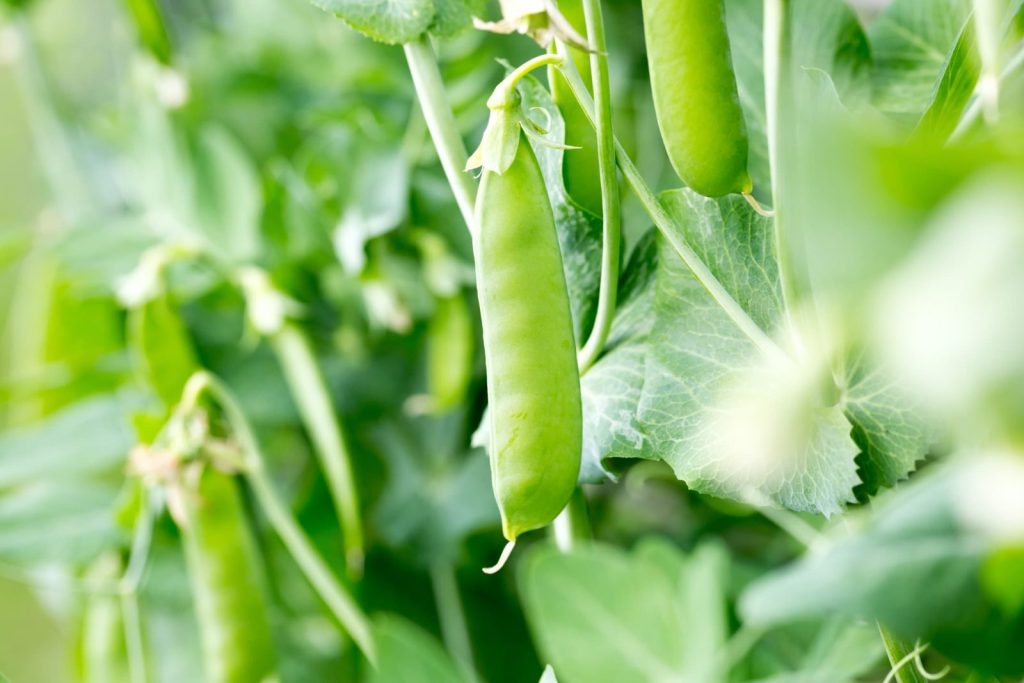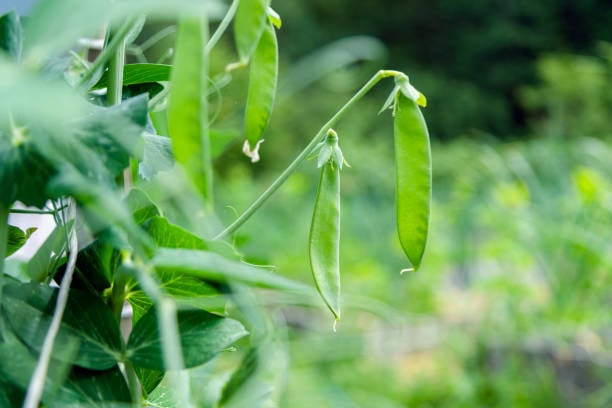Table of Contents
With minimal space, healthy & fresh produce, and rich in nutritious value, Mangetout plants can be an excellent addition to your garden. Growing Mangetout plants in your garden have a lot of benefits as these plants are very rich in vitamins and minerals and have a lot of nutritious value.
Also popularly known for one of its varieties, sugar snap peas which are also rich in vitamin C, fiber, and iron. Now these plants are very easy to grow in your garden, and it helps you get access to fresh, healthy, and organic produce.
In this article, we will explore how to grow Mangetout plants easily with a step-by-step guide. But before we explore the steps, let us understand Mangetout plants a little more in detail.
What Are Mangetout Plants?
Mangetout plants are a versatile and delicious addition to any vegetable garden. They are excellent plants to grow in a small space. They are easy to grow and can be eaten raw or cooked. In addition, Mangetout plants are extremely rich in vitamins and nutrients and are very healthy plants and thus making them an even better addition to your home garden.
How to Grow Mangetout Plants

With proper guidance, you can easily grow the Mangetout plant in your garden. Below is a step-by-step guide for you to grow the plant. Make sure you follow all the steps, right from choosing the proper variety to taking proper care of it.
Step 1: Choosing the Right Variety of The Mangetout Plant
When it comes to growing Mangetout, the first step is to choose the right variety. There are two main types of mangetout: bush and climbing. Bush varieties tend to be shorter and do not require support while climbing varieties can grow up to 6 feet tall and require support. Some popular bush varieties include Sugar Ann and Sugar Bon. Popular climbing varieties include Sugar Snap, Golden Sweet, and Cascadia. Consider the amount of space you have and choose an appropriate variety that will fit your needs.
Step 2: Preparing the Soil
Mangetout plants prefer well-draining soil. Make sure that the pH is between 6.0 and 7.0, as these plants prefer those levels. Before planting, prepare the soil by removing any weeds and adding organic matter, such as compost or well-rotted manure. This will improve soil structure and provide the necessary nutrients for your mangetout plants to grow.
Step 3: Planting the Seeds
Mangetout seeds can be planted directly in the ground once the soil has warmed up in the spring. Plant the seeds about 1 inch deep and 2 inches apart. If you are planting climbing varieties, provide support for the plants to climb up. You can use trellises, stakes, or fences to provide support.
Step 4: Water and Fertilize
Mangetout plants need regular watering, especially during dry periods. Water deeply once a week or more frequently if the weather is particularly hot and dry. It’s important not to overwater, as this can lead to root rot. To avoid overwatering, stick your finger into the soil up to the second knuckle. If the soil feels dry, it’s time to water. If it’s still moist, wait a day or two before checking again.
Fertilize mangetout plants every two to three weeks with a balanced fertilizer. You can also use a foliar spray to provide nutrients directly to the leaves. Be sure to follow the manufacturer’s instructions for the fertilizer you choose.
Step 5: Harvesting
Mangetout plants will start producing pods about 60 days after planting. Harvest the pods when they are plump and the peas inside are just starting to form. It’s best to harvest them frequently to encourage the plant to produce more pods. If you wait too long to harvest, the pods will become tough and stringy.
Step 6: Pest and Disease Control
Like all plants, mangetout can be susceptible to pests and diseases. Some common pests include aphids, slugs, and snails. You can control these pests by using insecticidal soap or diatomaceous earth. For slugs and snails, you can set out bait traps or use copper tape around the base of your plants.
Diseases that can affect mangetout plants include powdery mildew, root rot, and damping off. To prevent disease, it’s important to provide good air circulation around your plants and avoid overwatering. If you do notice signs of disease, remove affected plants immediately to prevent the spread of disease.
Varieties of Mangetout Plants
There are many varieties of Mangetout plants available. While the exact number can vary, there are some common and popular varieties of these plants. These include Sugar Snap Peas, Snow Peas, Golden Sweet Peas, Oregon Giant Peas, and Cascadia Peas. With wide varieties out there with unique looks and textures, you can make your garden diversified with their varieties.

Since there are multiple varieties to choose from, choosing the right variety that fits your space is extremely important. If you have a small space, you might want to choose a variety with a shorter height. Below is the list of a few varieties which would provide you with an idea of which variety of Mangetout plants would be your go-to choice.
Do note that the below list is in order of height, with the first being the shortest.
1. Asparagus Pea – 30cm (12 Inches)
With the botanical name Lotus tetragobolonus, this is one of the shortest varieties of Mangetout plants. It’s a very decorative plant with a flower border and doesn’t require much support.
2. Norli – 60cm (24 Inch)
It has flat pods and is resistant to Fusarium wilt disease.
3. Delikett‘ – 75cm (30 inch)
It is a type of climbing variety, and it requires support as compared to Asparagus.
4. Delikata – 120cm (47 Inch)
It’s a dual-purpose mangetout plant. It produces conventional peas when you are unable to pick the pods early.
5. ‘Swiss Giant‘ or ‘Gigante Svizzero‘ – 160cm (63 inch)
One of the tallest mangetout plants, it requires strong support. It is a popular climbing variety.
6. Golden Sweet – 180cm (71 Inches)
The tallest mangetout plant on our list, a true golden podded giant which requires full support.
Conclusion
Growing Mangetout plants is a rewarding experience. By following these simple steps, you can enjoy fresh, delicious sugar snap peas right from your own garden. Choose the right variety, prepare the soil, plant the seeds, water and fertilize regularly, harvest frequently, and control pests and diseases.
With a little bit of care and attention, you can grow Mangetout plants easily and enjoy the benefits of healthy and fresh produce. While many varieties don’t require much support and care, some tend to be the opposite, especially the taller varieties.
Choose the one that fits your space, your lifestyle, and your aesthetics if that is one of your criteria. With low maintenance, multiple varieties, and excellent benefits, especially from a health perspective, Mangetout plants can be an amazing choice for your garden.





